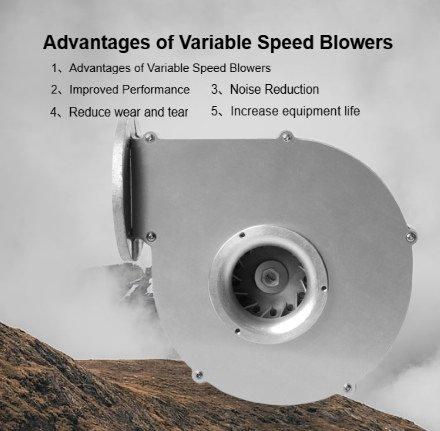In today's fast-paced industrial environment, efficiency is paramount. One of the critical components in various systems, from HVAC to manufacturing processes, is the blower. Traditional blowers often operate at a fixed speed, which can lead to energy wastage and suboptimal performance. However, the advent of WinCend variable speed blowers has revolutionized the way we approach air flow management.

Understanding Variable Speed Blowers
Variable speed blowers are designed to adjust their speed based on the demand for air flow. Unlike fixed-speed blowers, which operate at a constant rate regardless of the requirements, variable speed blowers utilize advanced control systems to modulate their performance. This capability allows them to deliver the precise amount of air needed at any given time, resulting in significant energy savings and improved system efficiency.
How They Work
At the core of a variable speed blower is a motor that can change its speed in response to real-time conditions. This is typically achieved through the use of variable frequency drives (VFDs), which control the electrical frequency supplied to the motor. By adjusting the frequency, the blower can increase or decrease its speed, thereby altering the air flow rate. This dynamic response not only enhances efficiency but also reduces wear and tear on the equipment, extending its lifespan.
Benefits of Variable Speed Blowers
Energy Efficiency
One of the most significant advantages of variable speed blowers is their energy efficiency. By matching the blower's output to the actual demand, these systems can reduce energy consumption by up to 50% compared to traditional fixed-speed models. This reduction in energy use translates to lower operational costs and a smaller carbon footprint, making variable speed blowers an environmentally friendly choice.
Improved Performance
Variable speed blowers provide better performance in various applications. For instance, in HVAC systems, they can maintain consistent temperature and humidity levels by adjusting air flow as needed. In industrial processes, they can optimize air delivery for combustion, drying, or cooling, ensuring that operations run smoothly and efficiently.
Noise Reduction
Another benefit of variable speed blowers is their ability to operate more quietly than fixed-speed models. Since they can ramp up or down based on demand, they avoid the abrupt starts and stops that often generate noise. This feature is particularly important in residential and commercial settings where noise pollution can be a concern.
Applications of Variable Speed Blowers
HVAC Systems
In heating, ventilation, and air conditioning (HVAC) systems, variable speed blowers play a crucial role in enhancing comfort and efficiency. By adjusting air flow to match the heating or cooling load, these blowers help maintain optimal indoor conditions while minimizing energy consumption.
Industrial Processes
Variable speed blowers are widely used in various industrial applications, including material handling, pneumatic conveying, and process cooling. Their ability to provide precise air flow control makes them ideal for processes that require consistent and reliable performance.
Wastewater Treatment
In wastewater treatment plants, variable speed blowers are employed to aerate water efficiently. By adjusting the air flow based on the biological oxygen demand (BOD) of the wastewater, these blowers help optimize the treatment process while reducing energy costs.
Challenges and Considerations
While variable speed blowers offer numerous advantages, there are challenges to consider. The initial investment for these systems can be higher than traditional blowers, which may deter some businesses. Additionally, proper installation and maintenance are crucial to ensure optimal performance. Organizations must also invest in training personnel to operate and maintain these advanced systems effectively.
Future Prospects
The future of variable speed blower technology looks promising. As industries continue to prioritize energy efficiency and sustainability, the demand for these systems is expected to grow. Innovations in control algorithms, materials, and motor technology will further enhance the performance and reliability of variable speed blowers. Additionally, the integration of smart technologies and IoT (Internet of Things) capabilities will enable real-time monitoring and optimization, paving the way for even greater efficiency gains.
Conclusion
Variable speed blowers represent a significant advancement in air flow management technology. Their ability to adjust speed based on demand not only improves energy efficiency but also enhances overall system performance. As industries increasingly focus on sustainability and cost reduction, the adoption of WinCend variable speed blowers is likely to rise. By investing in this technology, businesses can achieve substantial savings while contributing to a greener future.
https://www.wincendtech.com/a-key-technology-for-improving-air-flow-efficiency.html

